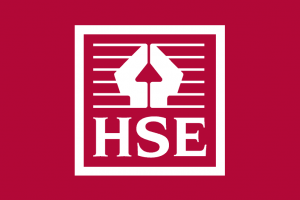Effective use and communication of management info key to successful outcomes between businesses and landlords

Frank Ofonagoro, managing director, financial advisory with Quantuma, writes on the code of practice for commercial property relationships between businesses and landlords following COVID-19

Frank Ofonagoro
On November 9, 2021 the Government published two important legislative updates in its effort to assist business tenants and commercial landlords resolve the significant level of unpaid rent arrears caused by the impact of COVID-19 on businesses.
These legislative updates are a new draft of the Commercial Rent (Coronavirus) Bill and a code of practice for commercial property relationships following the COVID-19 pandemic.
Commenting briefly on the Bill, it provides for the ring fencing of certain tenant lease debts which have accrued due to the tenant being mandated to close their premises during the pandemic. The Bill is designed to work in conjunction with the Code, but in essence if a tenant has a relevant debt arising as a direct result of COVID-19 – eg incurred during lock-down – then the Bill provides, among other things, that parties can refer the matter to binding arbitration, which will determine what should happen to that debt.
Turning specifically to the Code, it is intended to provide a framework within which parties to a lease can resolve rent disputes. It also sets out the following principles that should guide parties in negotiations and by which arbitrators should consider what awards to make under the new binding arbitration scheme:
- The Code/Bill should focus on preserving ‘viable’ businesses;
- However, the preservation of a tenant’s business cannot be at the expense of the landlord’s solvency;
- A tenant should pay arrears where they can without delay; and
- Parties should transparently provide sufficient documentation/information for the other party to understand their position.
It is this last aspect of the Principles that this article focuses on. The possibility of tenants and landlords finding common ground to enter into a binding agreement for the amount of rent arrears that will be paid going forward is critically dependent upon robust, accurate, transparent and realistic information about the tenant and landlord’s respective businesses.
This creates an interesting dynamic that will take some getting used to, in particular, for landlords who in pre-COVID times would be the party typically requesting pertinent information where a struggling business tenant is seeking either a rent reduction, change of rent payment dates – from quarterly to monthly – or other forms of breathing space.
In this scenario the landlord held most of the cards and wouldn’t have had to worry about showing their hand in revealing the extent of their own financial situation.
The new Bill and the Code, as set out early in this article, therefore, represents a significant change as far as the tenant landlord relationship is concerned. So, what may the transparent provision of “documentation/information for the other party to understand their position” look like in practice?
The Bill does not seek to prescribe a list of documentation/information that should be made available by tenants and landlords, rather it makes it clear that the onus is on the tenant to prove why the arbitrator should make an award deviating from the terms of the lease, with reference to its viability and affordability.
Therefore, one would expect tenants to provide a suite of management information consisting of historic vs forecast financial performance with insightful commentary showing how COVID has impacted the business, especially in relation to EBITDAR – EBITDA before rent payments – as a proxy for cash generation.
Landlords will be expected to provide similar information comparing historic to forecast financial performance with an emphasis perhaps of how a reduced level of rent receipts will impact banking covenants from their lenders predicated on a stable level of contracted pre-COVID rent receipts.
The important role of management information within this regime will shine a light not only on the quality of tenants and landlords’ finance functions and their ability to produce accurate/useful financial information, but also on how this information is presented and communicated to the other side.
Are management teams able to present them in a way that is credible and not appear self- serving and ‘over egged’? Should they be subject to external business review by independent financial advisory experts to support their credibility in the eyes of the arbitrator?
I will conclude by noting that whilst this article seeks to provide some early commentary on one aspect of the new regime introduced by the Government – there are key principles of the Bill and the Code that would have benefited from clear definitions for example – the quality and effective communication of management information will be crucial to tenants and landlords achieving successful outcomes over the coming months.







